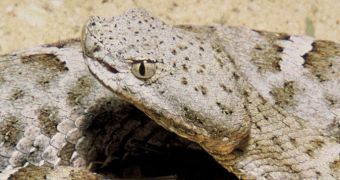Biologists and naturalists have been wondering for a long time why precisely snakes are capable of discovering prey in the dark, and then attack it very precisely, seemingly without effort. Some experts have hypothesized that the trait is based on the creatures' ability to see some of the infrared wavelengths of the electromagnetic spectrum, and a new research comes to confirm this idea. A science team was recently able to demonstrate the exact mechanisms that snakes used to detect these wavelengths, as well as the most likely evolutionary origins for this ability, Nature News reports.
The groups of snakes analyzed, including vipers, pythons and boa, all possess protein channels in their eyes that appear to be heat-activated by photons emanated in infrared wavelengths from the body of their targets. All these three types of animals have one thing in common, which is the pit organ. Located on the front of their faces, and resembling holes in appearance, these organs are outfitted with a special membrane that is capable of detecting IR photons from living animals up to one meter away from the snake.
During night hunting, this ability gives the slithering creatures an enormous advantage over their unsuspecting prey, which includes small rodents, birds, and so on. According to a new investigation, led by experts at the University of California in San Francisco (UCSF), the reason why this ability developed is the TRPA1 ion channel, which appeared in nerve cells located deep within the pit organ membrane. UCSF team leader and molecular biologist David Julius says that his investigations point at the conclusion that the snakes rather detect these IR photons as heat, and not light, such as our IR cameras perceive them.
“Animal physiologists have done beautiful work on the anatomy of this sensory system. That's really essential information for people like us coming in to do the genetics. What they didn't know was the molecular logic,” he said. The researchers published the results of their investigation in the latest issue of the respected scientific journal Nature. “The authors used elegant molecular techniques to confirm an idea long substantiated by physiological and behavioral data. Although aspects of the findings contradict known behavioral and physiological work, the use of molecular genetic techniques is a new step in understanding how the facial pits work,” Washington College herpetologist Aaron Krochmal, who has not been directly involved in the new work, added.

 14 DAY TRIAL //
14 DAY TRIAL //